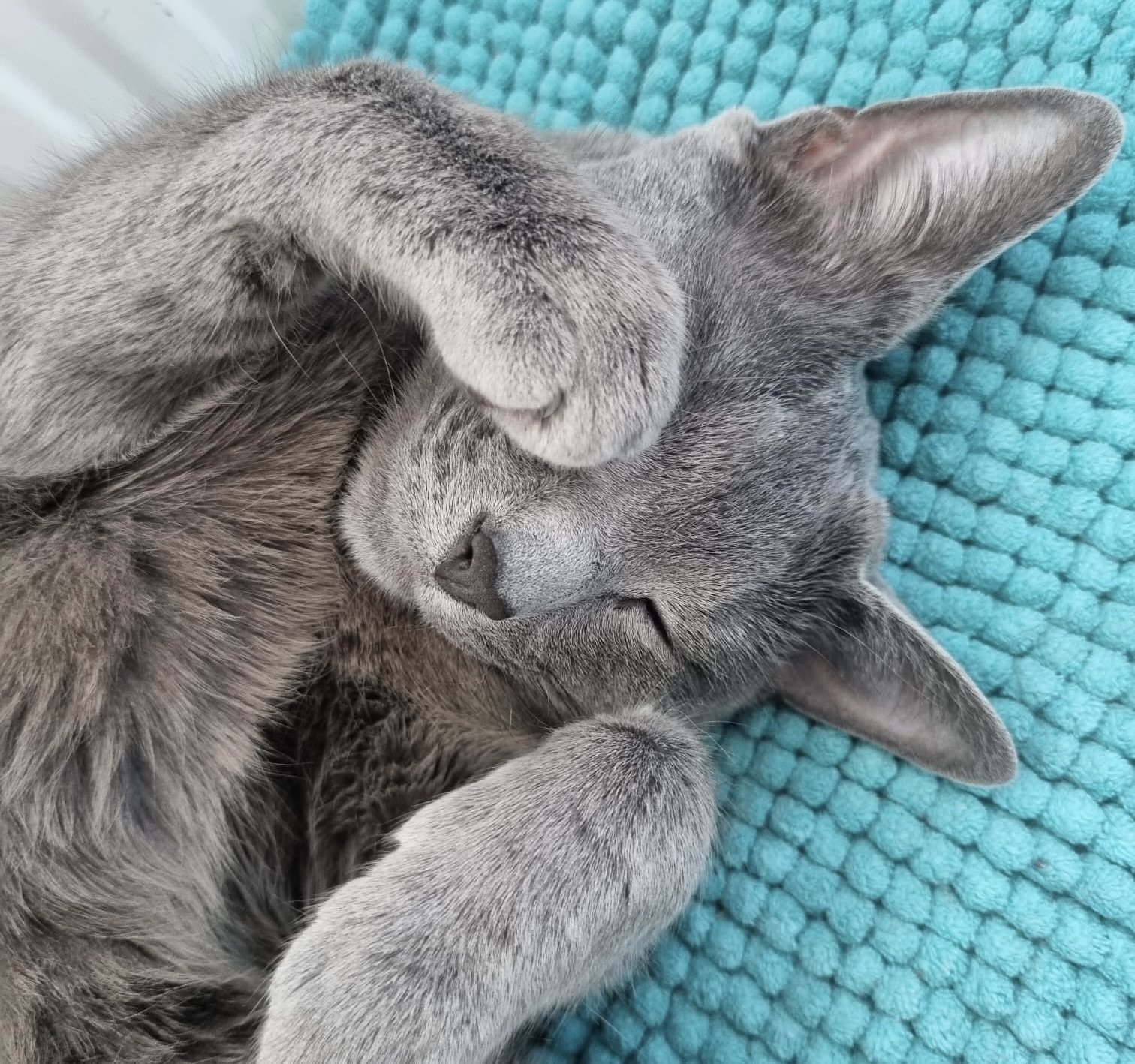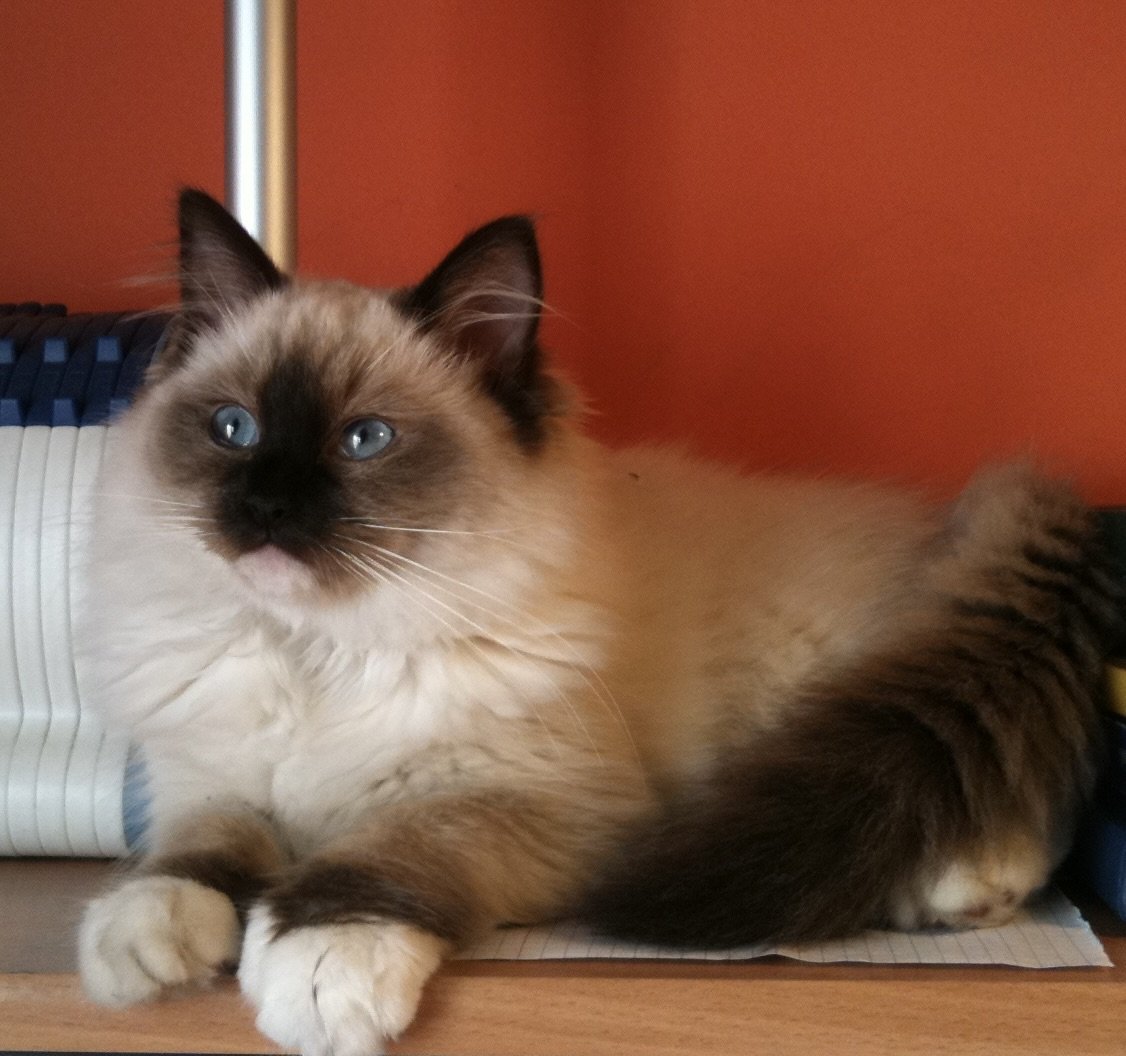
Filters
CLEAR ALLHimalayans are gorgeous cats with the body and coat of a Persian, but the colour, pattern and stunning dark blue eyes of the Siamese. A man-made breed, this cat is a cross between a Persian and Siamese, coming in a wide range of pointed colours.
Considered as one of the most recognizable and oldest cat breeds, the Himalayan are part of the Persian Breed Group that includes the Persian and the Exotic Shorthairs. These breeds share the same body type but differ in their coat type. The Exotic Shorthair has short, coarse hair, while the Himalayan and the Persian have long, luscious fur. These beautiful cats are known for their flat face, large rounded eyes and fat cheeks.
Gentle and calm, the Himalayans choose to be in a quiet environment. They are very relaxed and prefer lounging on a sofa with their human companion. Himalayans communicate with their expressive eyes and their soft, harmonious voice. They are an adaptable breed and enjoy living with any family who gives them lots of love and attention.
Compared to the other breeds in the Persian Breed Group, the Himalayans are docile but will display sudden bursts of kitten-like actions. You can see them napping in one corner then suddenly burst into action, running and rolling around the household. This cat breed loves to play with interactive toys, catnip mice, and chase balls. Still, because of their laid back personality, you have to encourage them to exercise daily.
Himalayans love to be next to their human companion. You can frequently find this cat sleeping in bed or in the lap of their human companion when they are in the mood for some love and attention. Unlike some other cat breeds, Himalayans don’t mind changes to their routine – just make sure that you provide them plenty of love, interaction and attention.
These cats are considered the “gentle giant” in the cat world. Despite their large size, they have a sweet, mild, yet playful nature. However, if you are considering a low-maintenance cat breed, this breed may not be the right companion for you as their long and silky coat needs daily care.
Himalayans are gorgeous cats with the body and coat of a Persian, but the colour, pattern and stunning dark blue eyes of the Siamese. A man-made breed, this cat is a cross between a Persian and Siamese, coming in a wide range of pointed colours.
Considered as one of the most recognizable and oldest cat breeds, the Himalayan are part of the Persian Breed Group that includes the Persian and the Exotic Shorthairs. These breeds share the same body type but differ in their coat type. The Exotic Shorthair has short, coarse hair, while the Himalayan and the Persian have long, luscious fur. These beautiful cats are known for their flat face, large rounded eyes and fat cheeks.
Gentle and calm, the Himalayans choose to be in a quiet environment. They are very relaxed and prefer lounging on a sofa with their human companion. Himalayans communicate with their expressive eyes and their soft, harmonious voice. They are an adaptable breed and enjoy living with any family who gives them lots of love and attention.
Compared to the other breeds in the Persian Breed Group, the Himalayans are docile but will display sudden bursts of kitten-like actions. You can see them napping in one corner then suddenly burst into action, running and rolling around the household. This cat breed loves to play with interactive toys, catnip mice, and chase balls. Still, because of their laid back personality, you have to encourage them to exercise daily.
Himalayans love to be next to their human companion. You can frequently find this cat sleeping in bed or in the lap of their human companion when they are in the mood for some love and attention. Unlike some other cat breeds, Himalayans don’t mind changes to their routine – just make sure that you provide them plenty of love, interaction and attention.
These cats are considered the “gentle giant” in the cat world. Despite their large size, they have a sweet, mild, yet playful nature. However, if you are considering a low-maintenance cat breed, this breed may not be the right companion for you as their long and silky coat needs daily care.



Himalayan cats, affectionately known as "Himmies", are medium to large size felines. They have stocky bodies with solid bones, short legs, broad chests, and rounded bellies. As fully grown adults, Himalayan cats usually weigh between 8 and 12 pounds. When well cared for, most Himmies will live for 8 to 12 years, with some living up to 15.
Himalayan cats inherit the best qualities of the Persian and Siamese breeds. They have a long, silky double-layer coat with a colour-point patterning. The majority of the fur on their body is white or cream, but the points can be one of several shades, including seal, red/flame, blue, chocolate, or lilac. Because they have a dense undercoat and long outer hairs, their fur can tangle and mat easily. Therefore, you should brush or comb it every day to keep it in top condition.
Like Persians, Himalayan cats have a round head with a "doll-face" and flat nose. However, some Himalayan cats are bred from peke-faced Persians, so they have more squashed-like facial features. What's more, Himmies inherit the Siamese's striking blue large, round eyes.
Himalayan cats are super friendly and affectionate, and like their Persian parents, have a sweet and gentle nature. Still, due to their Siamese heritage, they are social, intelligent and have a very playful side, too. They are significantly more active than Persians but calmer than Siamese, creating an even-temperament, which is what makes them a fabulous indoor kitty.
Thankfully, Himmies did not inherit the Siamese's highly vocal trait, and they are generally pretty quiet felines. They do crave attention from their owners, though and love to be petted. This love of physical contact makes daily grooming a breeze, as it becomes a ritual that they look forward to.
Being a hybrid of both a calm and an active breed means that Himalayan cats can go from one extreme to another. For example, this kitty could be lying in the sun, relaxed one minute, and then suddenly go crazy and start running around. Even so, their playful bursts are generally short, and they only require a couple of quick play sessions each day. Plus, they are easily entertained, so provided they have plenty of toys and scratch posts, Himmies are pretty good at keeping themselves entertained.
Himalayans often become incredibly loyal to their owners and love to lay on the laps of their humans. They are also a very adaptable breed with a good amount of independence. They generally do okay when left alone for short periods, but they do get lonely too. How long you can leave your Himmie alone will depend on their specific personality.
Being friendly, social, and adaptable felines, Himalayan cats do well in most types of homes. They do not have high exercise or playtime needs, but they do require grooming every day. Even so, a quick comb through their luxurious coat is usually sufficient, and once you get into the habit of doing it, you'll find it doesn't take too much time or effort.
Because they are so affectionate and love to be petted, Himalayan cats are ideal for someone looking for a furry friend to relax and watch the evening soaps with. However, some Himmies can display the shyness of the Persian breed, so they may not enjoy living in loud, busy environments. What's more, some Himmies are not too fond of strangers and visitors to the house.
Since Himalayan cats are pretty docile, they generally get along with other well-behaved cats and dogs. They do not display any aggressive behaviour toward other animals or children. In fact, as they are so affectionate, they tend to welcome attention from young kids, as long as they do not roughly handle them.



Their stories
We love happy endings. Discover stories of pets who found their beloved family with the help of The Pedigree Paws <3.

Neo
Russian Blue
We had some concerns purchasing a kitten online but our experience with The Pedigree Paws was great. They connected us with Caroline, the Russian Blue breeder and we had many conversations and received multiple pictures and videos. She answered to all our questions.
The Pedigree Paws verified for us all the vaccinations and health checks to make sure our new kitten was 100% healthy.
Thank you for all your help The Pedigree Paws! Highly recommended!

Jack
Miniature Dachshund
One of the reasons I was hesitant to order a puppy from The Pedigree Paws is because I live in Spain. However they connected me with a very good FCI breeder in Barcelona.
He showed me all the health documents of both parents, their pedigree and answer to all my questions. I am so happy they helped me to find a healthy puppy as finding one by myself was very overwhelming. Contacting The Pedigree Paws was the best decision and I highly recommend them to everybody!

Stitch
Chartreux
From the kittens's selection to the arrival of our Chartreux kitten, The Pedigree Paws was there to assist us. We had great experience with them, and they breeder Alexandra from France with whom they connected us and from whom we got our kitten from. They are very prompt in answering our initial and follow-up questions while our kitten was in transit. Very reliable and trustworthy!
Thank you so much for all your help. We are very happy with our new family member. We will definitely recommend it to all our friends.
Athena
Chihuahua
It's been a few months since we decided to find a Chihuahua puppy to join our family, however we had issues finding a good breeder.
We contacted The Pedigree Paws and they connected us with a very unique breeder in Greece. Many videos and pictures were shown, the breeder shared with us the proof of vaccinations, deworming and her 5 generation pedigree. We were fortunate as George, the breeder was able to deliver the puppy to us personally. We are very pleased with our beautiful Athena. Thank you, The Pedigree Paws, for being truthful and transparent.
Thor
Abyssinian
I feel wonderful having help from The Pedigree Paws finding the dream Abyssinian kitten I was looking for. Thor is the absolute dream! The Pedigree Paws team was really patient and responsible in everything. Lovely experience! They replied to every questions, requirements, and information I ask about the kitten.
Fin
Chihuahua
Thank you for finding for me such a beautiful Chihuahua puppy! I love him so much from the minute I saw him. He changed my world.
Kate, from The Pedigree Paws assisted me through the whole process informing me about everything from health checks to arranging a Pet Nanny to transport Fin directly to my door. So thankful that the experience went so well! I love my Fin.

Emi
Ragdoll
I have always wanted a Ragdoll kitten as it was my dream cat breed, but didnt know how to find one as heard a lot about kitten farms and bad breeders. I reached out to The Pedigree Paws and they were very accommodating and transparent from the start. They offered me few kittens from their list of breeders and when I saw Emi I knew she was the one! We went through the kitten's parents DNA testing as for me that was a priority to have a kitten free from genetic disorders. We sealed the deal and now I have the best kitten I could dream of! Thank you very much for all your help
Shima
Russian Blue
I really wanted a Russian Blue kitten, but was very nervous getting one after reading horror stories about scammers on the Internet. I had my first call with Natalia, from The Pedigree Paws and with her help I was able to connect with the breeder, that I knew I could trust. I am very lucky to have now Shima, she is an absolute joy to live with.
Need some help?
Contact us to speak to our friendly advisor, who will gladly help you find your dream pet!



We are registered in England and Wales under registration number 12568840,
and our registered office is at 58-60 Kensington Church Street, W8 4DB London, England.
© 2023 The Pedigree Paws